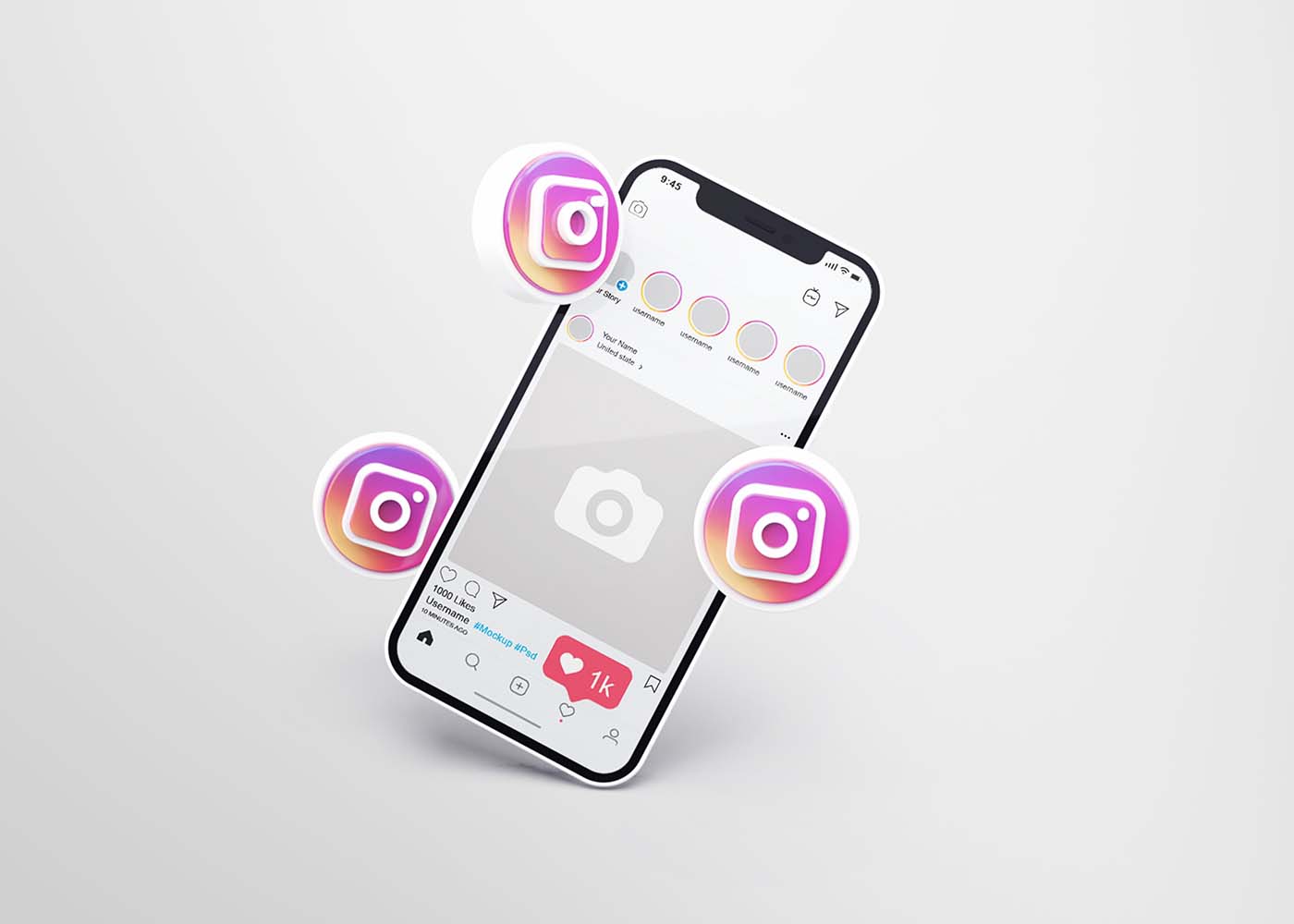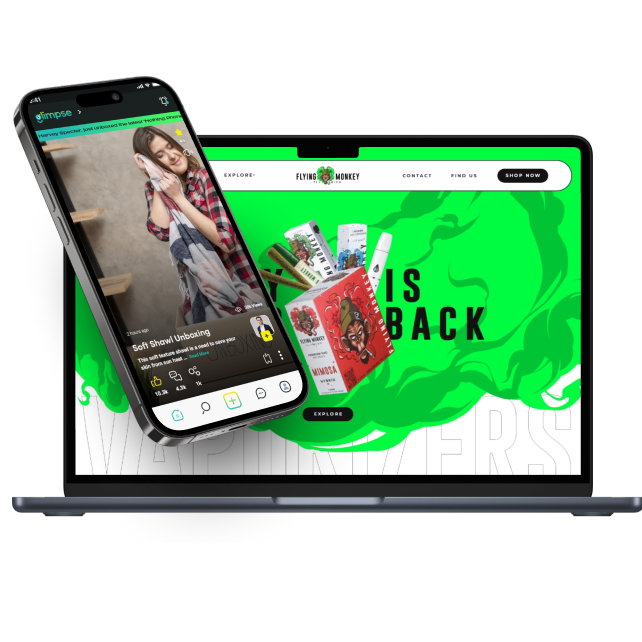Latest Blog
The Psychological Impact of Colors in Instagram’s App Design

Did you know that the colors used in an app’s UI/UX design can have a psychological impact on users? Believe it or not, Instagram’s color scheme has been carefully chosen to elicit certain emotional reactions from its users; these feelings and thoughts could inspire more likes, shares, followers, and even purchases. In this blog post, we’ll explore how the shades of blue chosen by Instagram are influencing their user behavior as well as some other Insta-worthy tips for designing effective color psychology into your own app. So if you’re curious about why certain hues can be so powerful – stay tuned!
Color Psychology – How it Affects Our Behavior and Emotions
Have you ever noticed how certain colors make you feel a certain way? For instance, red might make you feel passionate or energized while blue might make you feel calm or relaxed. This is the basis of color psychology, which explores how colors can affect our behavior, emotions, and even our physical sensations. Different colors can evoke different moods, feelings, and associations, depending on cultural and personal experiences. Understanding color psychology can be helpful in various fields such as marketing, design, and even personal development. By harnessing the power of color, we can better communicate our messages, improve our environments, and enhance our well-being.App Design and Its Impact on User Experience
App design choices have a powerful impact on user experience, making an app easy or frustrating to navigate. Once an understanding of how app users interact with the design elements is gained, app designers can make informed decisions to create user-centered experiences. This can involve evaluating different color schemes, layouts, and navigation options to find the most effective combination. By conducting extensive research and testing, app creators can deliver tailored experiences that users find both intuitive and pleasurable. Ultimately, the design choices made by app developers can make all the difference in whether an app is downloaded and used or abandoned quickly.The Overview of the Instagram App Design
Instagram has become one of the most popular social media platforms, with millions of active users. The design of the app is simple and intuitive, making it easy for people to use and navigate. When you first open the app, you’ll be greeted with the Instagram feed, which displays photos and videos from people you follow. From there, you can search for content, follow other users, and engage with posts by liking and commenting. Additionally, Instagram’s various filters and editing tools make it easy to enhance and customize your photos before sharing them with your followers. By understanding the basics of Instagram app design, you’ll be able to make the most out of your experience on the platform.The Different Colors Used by Instagram
Instagram is more than just a platform for posting pictures. It’s a visual medium that allows people to express their personalities and emotions with a simple click of a button. One of the ways that Instagram does this is through its use of colors. Each color has a specific meaning that can convey a range of emotions and associations. For example, red is often associated with passion and excitement, while blue is seen as calming and peaceful. By using these colors in various ways throughout the app, Instagram cultivates a unique and memorable experience for its users. Whether you’re scrolling through your feed or creating your own content, the colors used by Instagram can say a lot about your personality and the message you want to convey.Effect of Instagram’s App Design on User Behavior
Instagram has gained immense popularity among users since its conception, and it’s not just because of its user-friendly nature. Instagram’s app design plays a significant role in driving users to engage actively on the platform. The app’s vibrant visuals, ease of use, and intuitive navigation make it appealing to a broad audience. With features like the explore tab, stories, and reels, Instagram incentivizes users to share content frequently and interact with others on the platform. Additionally, Instagram’s design positively impacts user behavior by fostering a sense of community and encouraging users to build connections with others. Overall, Instagram’s thoughtful app design has contributed significantly to its success and is likely to continue driving user behavior and engagement well into the future.Psychological Impact of Instagram’s Iconography and Typography
Social media platforms like Instagram have become a ubiquitous part of our daily lives, influencing the way we perceive and interact with the world around us. But have you ever stopped to consider the impact of Instagram’s iconography and typography on our psychology? A growing body of research is exploring how the platform’s visual cues affect our emotional responses, cognitive processes, and even our sense of identity and self-worth. From the iconic camera logo to the app’s sleek sans-serif font, every design element has the potential to shape our behaviors and beliefs in subtle and profound ways. Research suggests that visuals are processed 60,000 times faster than text, so it’s no surprise that Instagram has become a place to share visual stories. It’s important to consider how the platform’s design elements can best serve your content and create a more compelling experience for users. From colors and fonts to icons and filters, there are countless ways to connect with viewers on an emotional level. For example, the right color palette can be used to convey a certain mood or emotion. Additionally, certain fonts have been proven to be more effective at conveying different messages. By using the right combination of design elements, you can ensure that your content is not only visually appealing but also informative and engaging for users.Consequences of Instagram’s algorithm – Fear of Missing Out (FOMO)
With the Instagram algorithm changing frequently, something that most users fear is the possibility of missing out on something important. This fear of missing out, or FOMO, is a common psychological phenomenon that stems from our innate desire to feel connected and included. The algorithm is designed to show users the most engaging posts first, leaving other content that may be just as important, yet less engaging, unnoticed. This creates a sense of insecurity and worries about social acceptance, especially for those who rely on Instagram for professional or personal reasons. The consequences of Instagram algorithms are real, and they can lead users to experience anxiety, uncertainty, and a heightened sense of competition.Conclusion
Colors, design, iconography, typography, and algorithms all play a major role in influencing the emotional experience of a user on Instagram. It’s important to be aware of how these variables are being used to manipulate behavior and possibly create feelings of FOMO. Furthermore, understanding the basics of color psychology can also help designers make better decisions when constructing their own app designs. As we can see, intricate details like these can significantly impact how people interact with digital platforms. If harnessed correctly, they could no doubt lead users to a much more enjoyable experience and produce greater engagement overall. We should continue to explore the nuances behind designing effective apps in order to ensure that both companies and users benefit from the technology we rely on every single day.Get the latest updates on new technology, services and many more by subscribing to this Newsletter.










